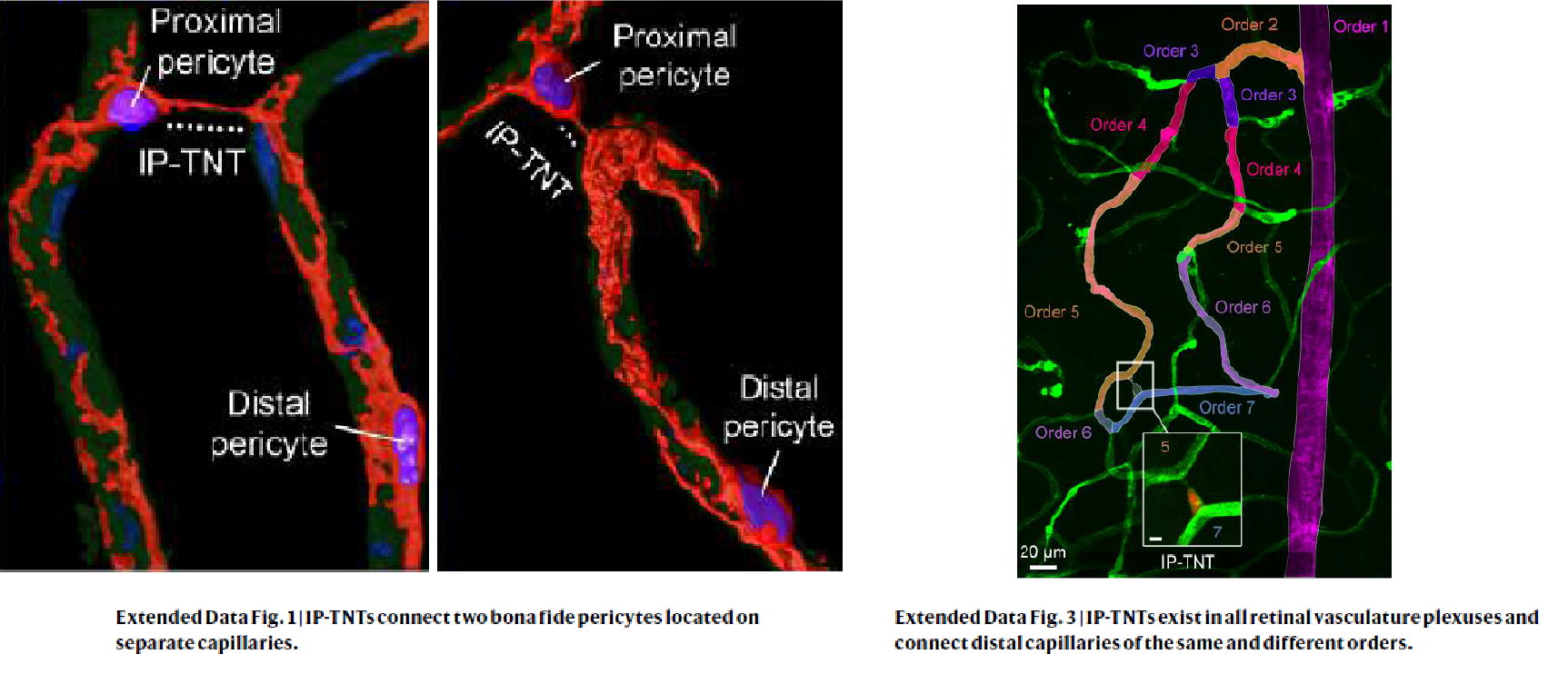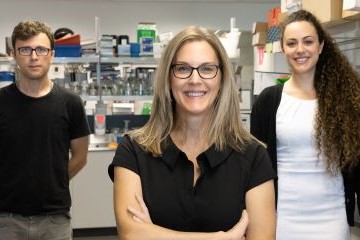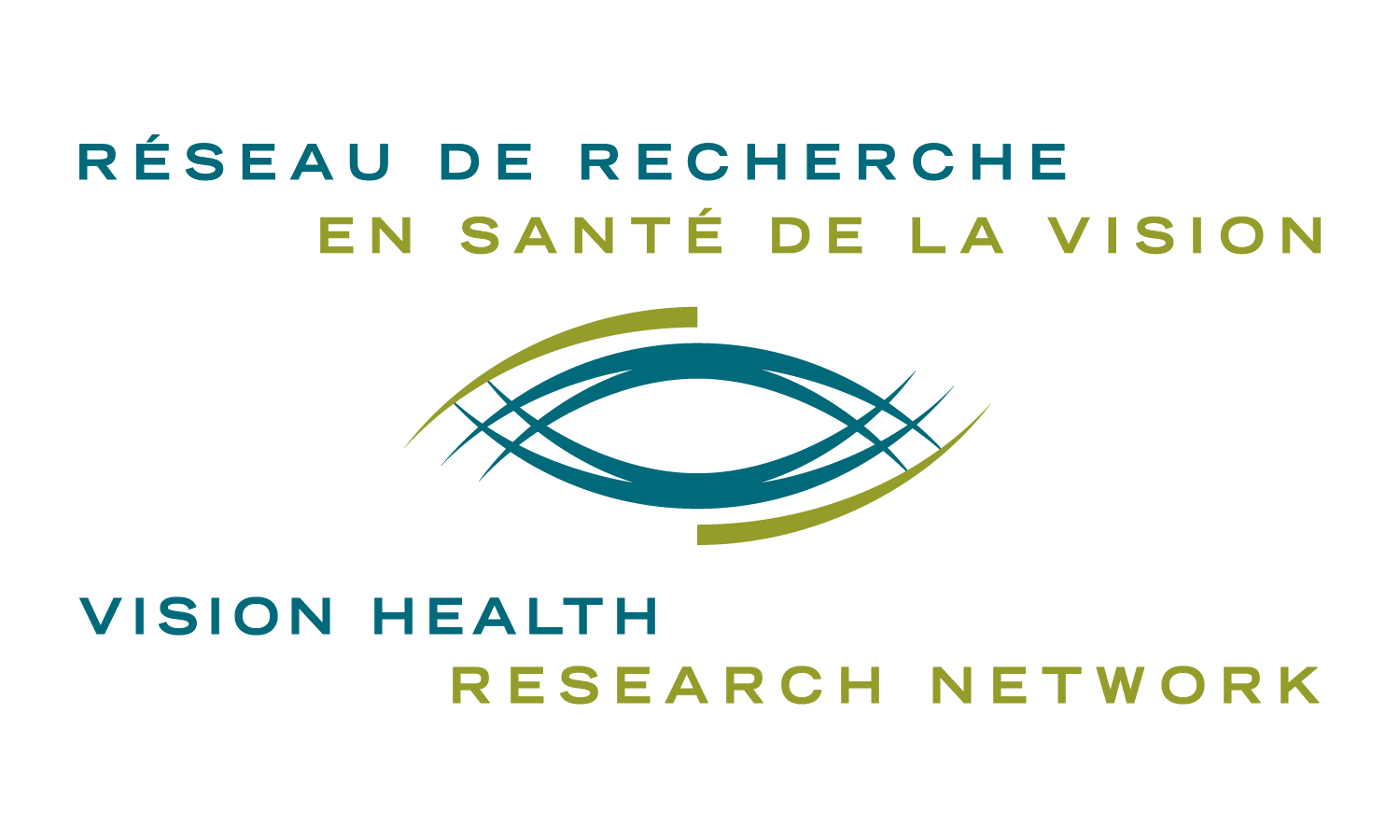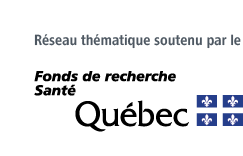Alarcon-Martinez, L.,Villafranca-Baughman, D., Quintero, H., Kacerovsky, J. B., Dotigny, F., Murai, K. K., Prat, A., Drapeau, P.,Di Polo, A. (2020) "Interpericyte tunnelling nanotubes regulate neurovascular coupling" Nature 585(7823):91-95
Résumé original
Signalling between cells of the neurovascular unit, or neurovascular coupling, is essential to match local blood flow with neuronal activity. Pericytes interact with endothelial cells and extend processes that wrap capillaries, covering up to 90% of their surface area1,2. Pericytes are candidates to regulate microcirculatory blood flow because they are strategically positioned along capillaries, contain contractile proteins and respond rapidly to neuronal stimulation3,4, but whether they synchronize microvascular dynamics and neurovascular coupling within a capillary network was unknown. Here we identify nanotube-like processes that connect two bona fide pericytes on separate capillary systems, forming a functional network in the mouse retina, which we named interpericyte tunnelling nanotubes (IP-TNTs). We provide evidence that these (i) have an open-ended proximal side and a closed-ended terminal (end-foot) that connects with distal pericyte processes via gap junctions, (ii) carry organelles including mitochondria, which can travel along these processes, and (iii) serve as a conduit for intercellular Ca2+ waves, thus mediating communication between pericytes. Using two-photon microscope live imaging, we demonstrate that retinal pericytes rely on IP-TNTs to control local neurovascular coupling and coordinate light-evoked responses between adjacent capillaries. IP-TNT damage following ablation or ischaemia disrupts intercellular Ca2+ waves, impairing blood flow regulation and neurovascular coupling. Notably, pharmacological blockade of Ca2+ influx preserves IP-TNTs, rescues light-evoked capillary responses and restores blood flow after reperfusion. Our study thus defines IP-TNTs and characterizes their critical role in regulating neurovascular coupling in the living retina under both physiological and pathological conditions.
*Luis Alarcon-Martinez est un des récipiendaires 2019-2020 du programme « Projet-Pilote pour chercheurs en début de carrière« du RRSV.

Communiqués

Annonce publiée au Centre de recherche du CHUM
Annonce publiée sur le site udm nouvelles « Des nanotubes dans l’oeil nous aident à voir »


